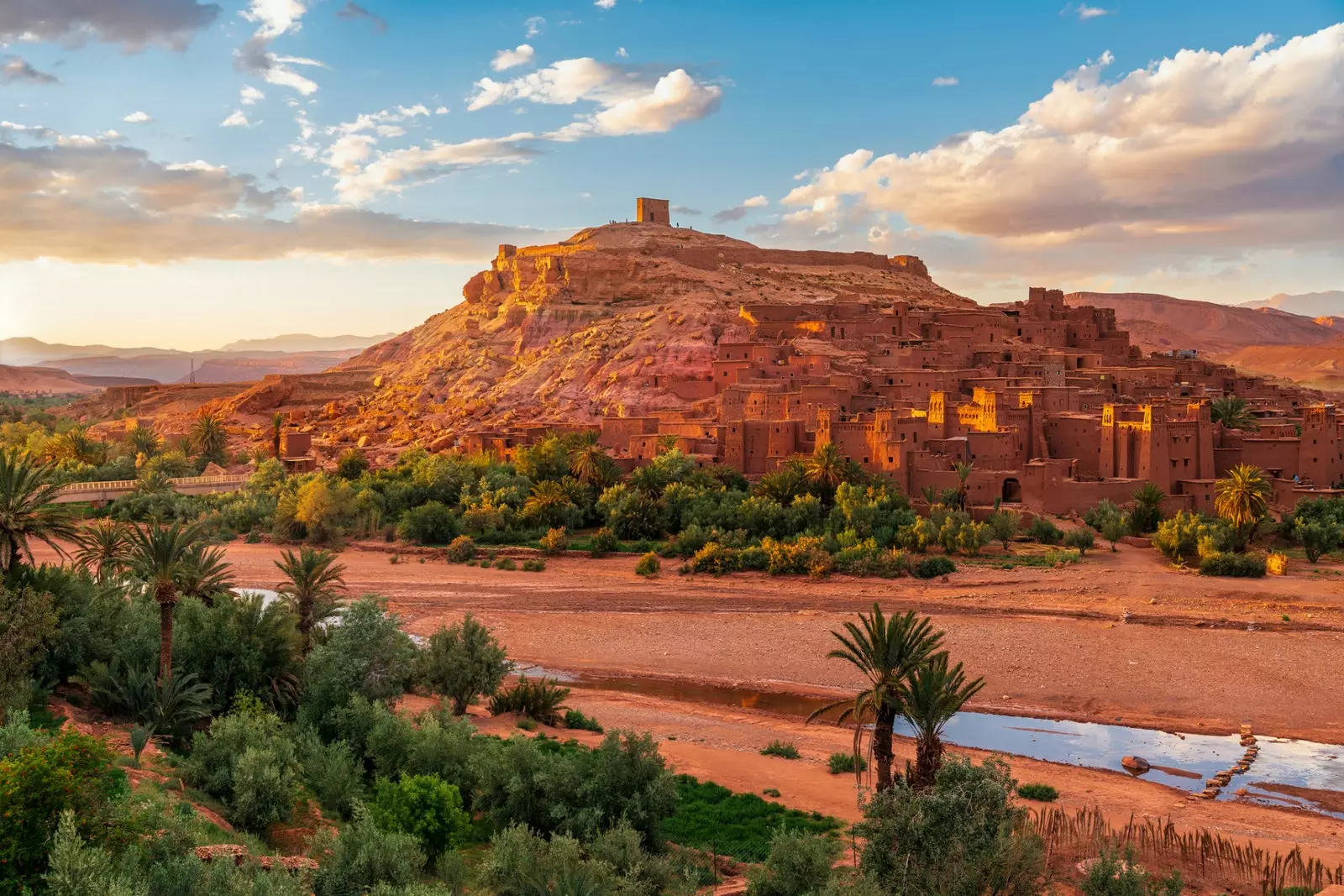
Sunset over the old town of Ait Ben Haddou, north of Morocco.
As we leave behind the snowy mountains of the Atlas, the Moroccan landscape changes. Here, the charms of the African lands multiply among palm groves, canyons, gorges and valleys crowned by kasbahs. The end of our route is the most fascinating image of the trip: the starry sky of the desert.
BETWEEN THE GREAT ATLAS AND OUARZARZATE
Innumerable adobe buildings endowed with great historical and cultural value are scattered throughout the ocher and reddish colors of the most unknown Morocco. They represent the traditional architecture of the south of the country under the name of kasbah. Most are no more than 100 years old, but there are some that can even date back to the 18th century to tell stories of the powerful families that inhabited them.
After the natural passage of Tizi n'Kitcha through the Atlas mountains, we arrive at Telouet, the first contact we will have with the kasbahs. The dilapidated appearance of its façade does not stop us from discovering an ornate interior. The luxurious decoration of the walls reveals that this kasbah, whose oldest parts date back to the eighteenth century, It was the Berber palace of the El Glaoui family. On the upper floor we can capture beautiful views of the region.
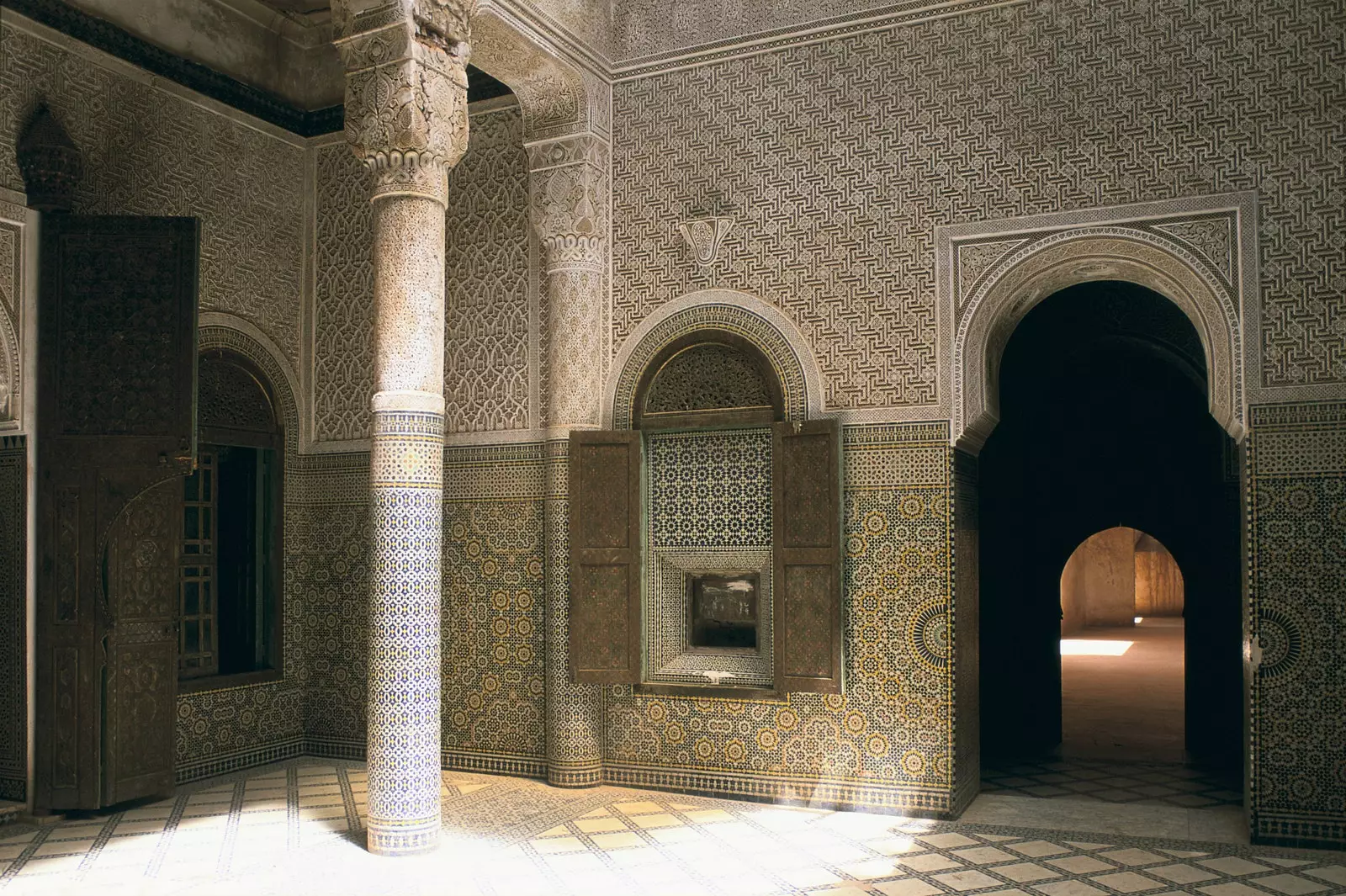
Kasbah Palace of the Glaoui, in Telouet.
An hour away, the Ounila River welcomes the Ksar Ait Ben Haddou, one of the best architectural examples in the area. This walled town, with several watchtowers and monumental entrances, It served in ancient times as a stopover for caravans from Sudan.
Palm trees surround the adobe buildings, which rise as if it were a fortification sculpted in nature. Dozens of little shops fill its streets with color with merchants willing to haggle over products we haven't even shown an interest in. We climb to the highest point that rewards us with images of valleys and mountains representative of the region.
Ait Ben Haddou is one of the most touristic places in Morocco. Its fame has been propitiated by the numerous films and series, such as Game of Thrones, which have been shot here, and its inscription in UNESCO as a World Heritage Site in 1987. The best time to visit it is with the lights that are projected on its stones early in the day or late in the afternoon, when the tourist buses are away.
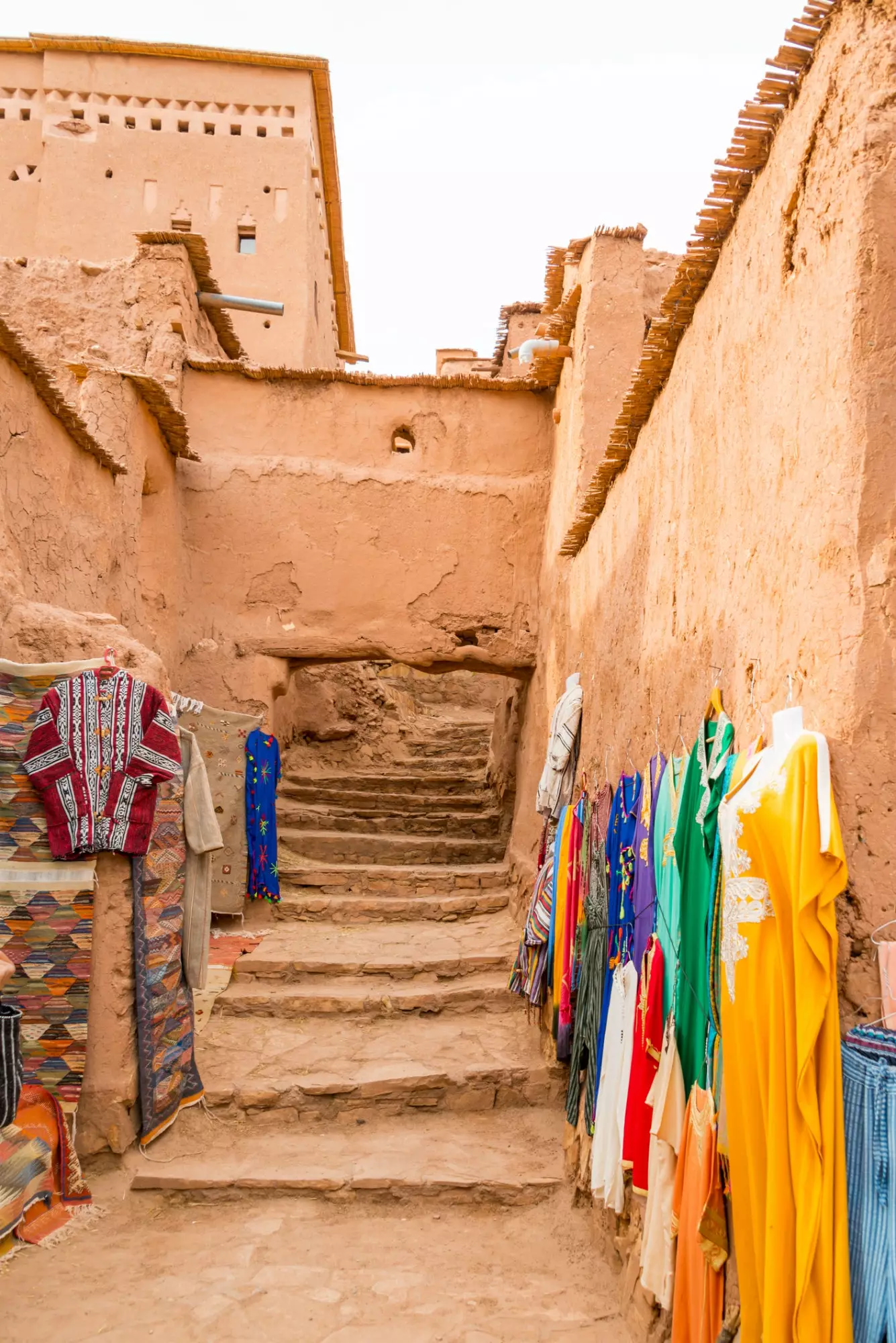
Small shops in the alleys of the Ksar Ait Ben Haddou, Morocco.
MOVIE SCENARIOS
In the direction of Ouarzarzate, the largest city at the gates of the desert, the landscapes continue to immerse us in movie sets: Star Wars, Lawrence of Arabia, Gladiator... We arrive at the decadent Atlas Studios, which have just left a record of how important cinema has been for the region.
At the foot of the Atlas Mountains, where the Draa and Dades rivers merge to embrace each other in a dam, another city molded in mud and clay appears: Ouarzarzate.
The well-preserved kasbah of Taourirt is the most interesting visit in Ouarzarzate. It was built in the 18th century, also by the Glaoui, as strategic location for the gold route between Marrakech and Timbuktu. Its luxurious interior decoration, made of wood and polychrome ceilings, contrasted with the simple adobe exterior. Between the characteristic bars of its windows you can see beautiful views of the silhouette of the city with the great dam in the background. The Taourirt rooms are labyrinthine, so getting lost among them will be another part of the visit.
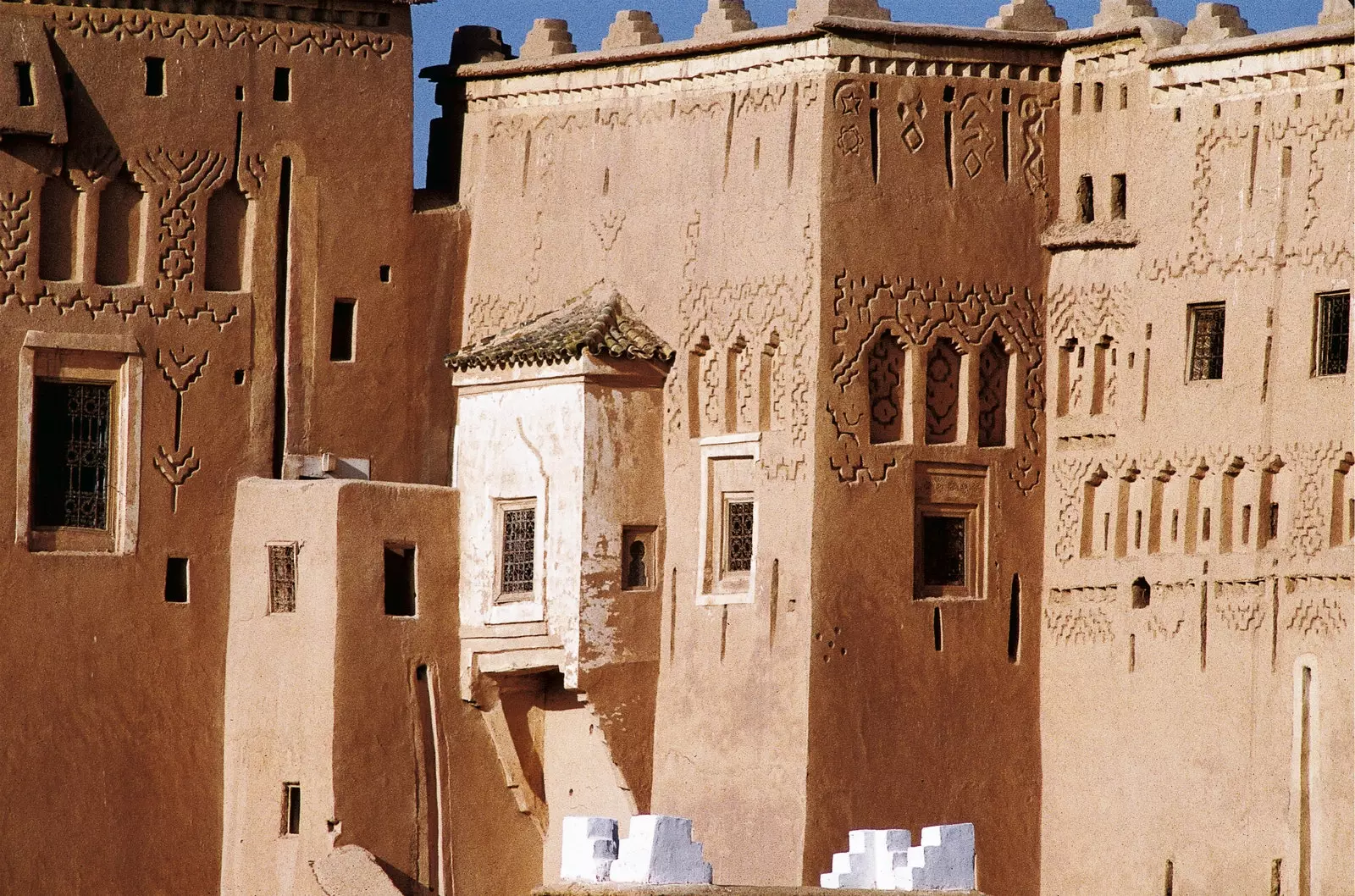
Labyrinthine kasbah of Taourirt, in Ouarzarzate.
BETWEEN THE MOST OVERWHELMING NATURE
To continue our journey and delve into the most authentic kasbash, we must travel the roads of the Valley of the Roses and the Valley of Dades, in the direction of Tinghir –if we take national route 10– or along the Draa Valley road, if we go through national route 9.
The rugged mountains of snow-capped peaks surround the road accompanying us on the other side of the window. Its color is changeable. Between hill and hill, some nomadic settlements make us explore another way of life.
We continue the itinerary stopping at viewpoints to observe canyons, gorges, mountains, valleys and all those geographical accidents that nature has outlined filling the area with charm. Among them, two gorges make the panorama even more bewitching if possible. The Dades Gorge, with its photogenic winding road on which several abandoned kasbahs stand, and the Todra Gorge, through which we can follow the traces of local life between gorges 300 meters high.
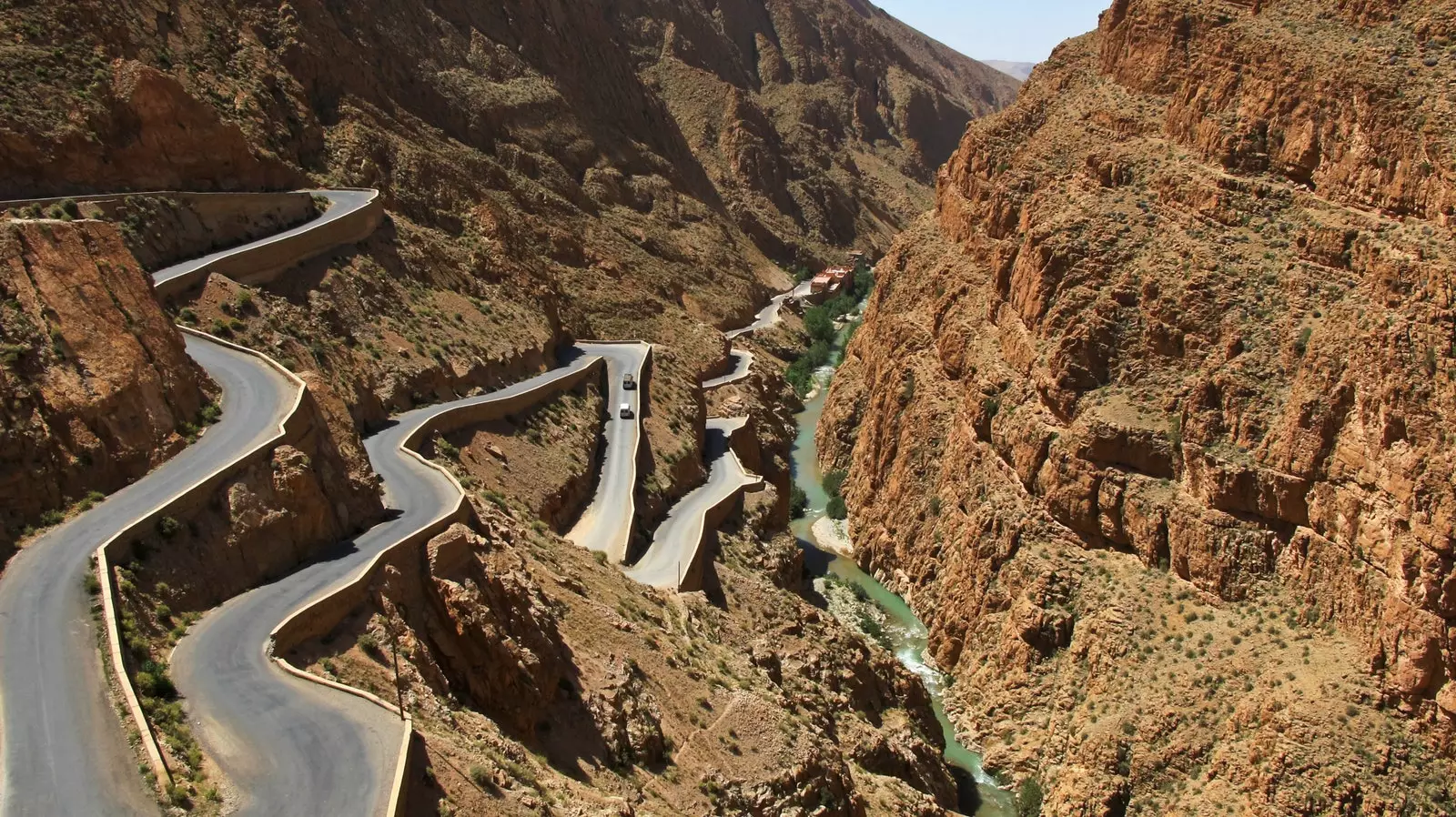
The Dadès Gorge is a gorge that lies between the Atlas Mountains and the Anti-Atlas mountain range.
Another landscape that leaves us spellbound is that of the infinite palm groves. Thousands of palm trees follow one another during our journey as splendid oases that guide us towards the desert. The one in Skoura, along route 10 or the one in Agdz with its kasbah in the background, along route 9, are perfect for pressing the camera button over and over again.
The continuous path of contrasts between thorny acacias also stops us in towns such as Nkob or Tazzarine, where we will capture the native essence. We will pass through Arab and Berber villages, such as Toirog, located among date palms. The stops will be good moments to taste mint tea accompanied by dates, the star product of these valleys.
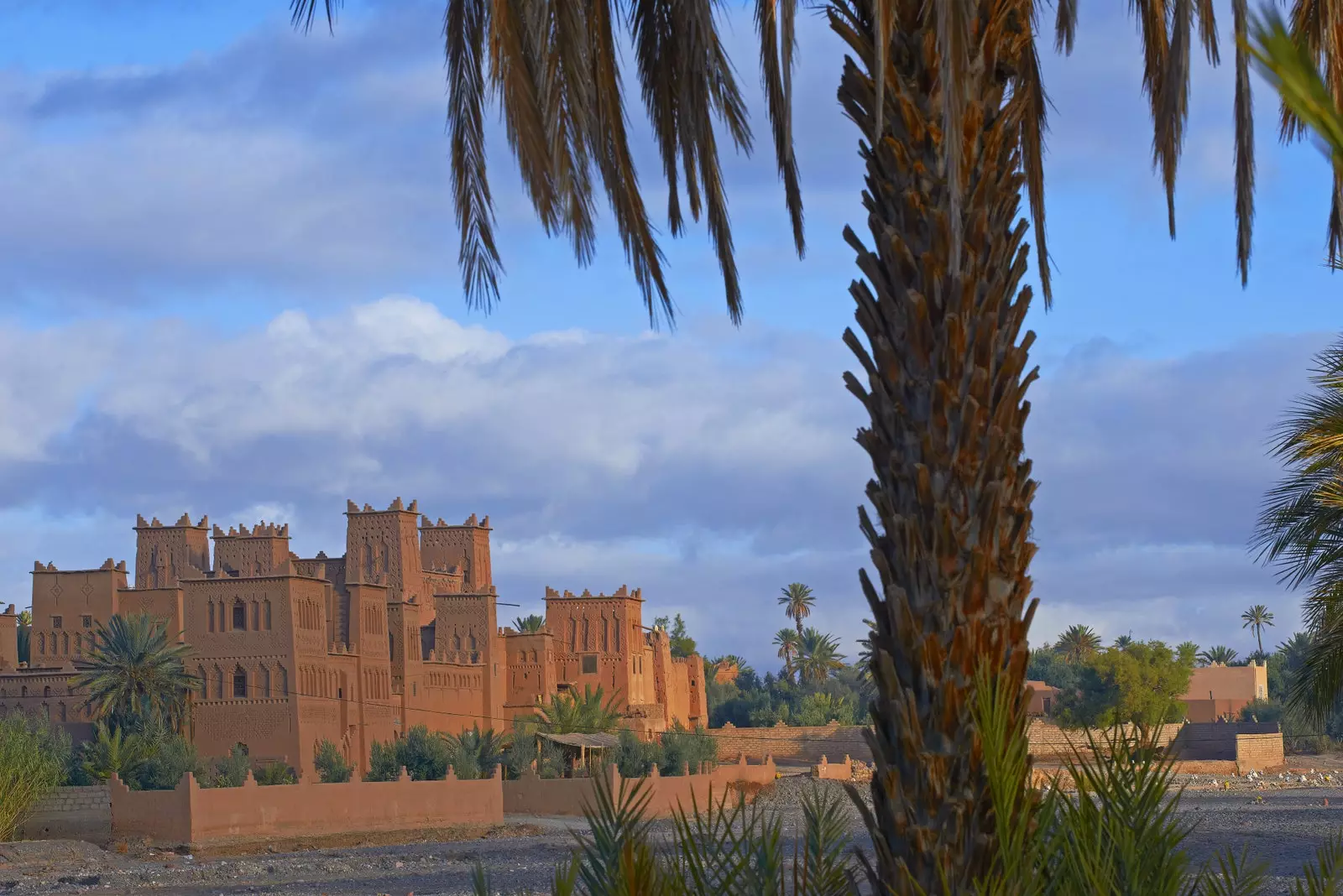
Ancient kasbah of Amerhidil, in Skoura.
ROUTE 10: THE VALLEY OF ROSES AND THE DADES VALLEY
Along this road full of kasbahs we will travel through impressive valleys and the most famous gorges in Morocco, Dades and Todra, being part of the spectacle of nature.
Before reaching the Valley of the Roses, the immense palm grove of Skoura makes us stop and discover one of the most important kasbahs of the route. The Kasbah Amridil, converted into a complete museum, appeared on the 50 dirham bills. Outside, more than 700,000 date palms surround it.
The Valley of the Roses It unfolds its most beautiful image at the time of its flowering, between the months of April and May. Nearby, towns like Kelaat M'Gouna live off the products they make from roses.
Approaching the Todra gorges, the car window brings us closer to dozens of kasbahs of Jewish origin.
The last kasbah of our tour of route 10 is El Khorbat, one of the best preserved. Your visit is ideal to learn about the life that was inside these constructions. On the other hand, outside, the winding alleys show us the day to day in the shadows of its nooks and crannies.
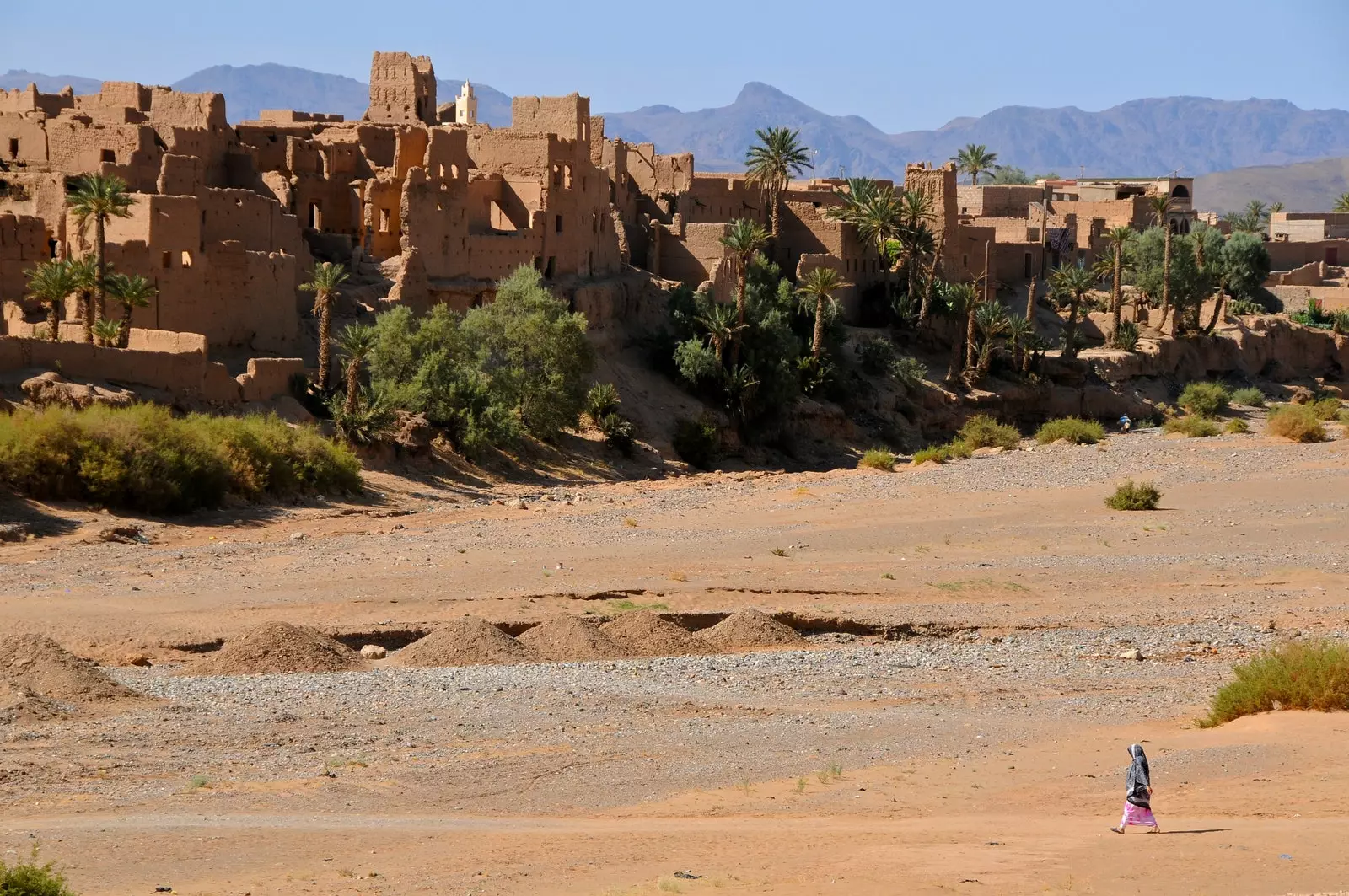
Ksar El Khorbat, in the region of Tinejdad (Morocco).
ROUTE 9: IN THE DRAA VALLEY
National Highway 9, which runs close to the Draa Valley, is considered one of the most spectacular in Morocco. The first kasbahs that we will see during this route are those of Agdz, hidden among the orchard of palm trees.
Further on, the town of Tamnougalt shelters numerous of these constructions connected by interior corridors. Among them stands out the Kasbah des Caids. Inside, the bare corridors intersect, losing us once again. The alleys that surround it merge the life of the past with that of the present. From here, the arid views of the town, with the brown mountains of the Atlas in the background, leave us with an image of lonely horizons where nothingness is everything.
Next we explore the little known Kasbah of Timiderte, in apparent abandonment. We find ourselves walking through dusty and empty streets with the sole purpose of looking for some inspiration to write these lines. We find little else, so we return to the surprising paths to let our minds continue to dissipate among the palm groves towards the desert.
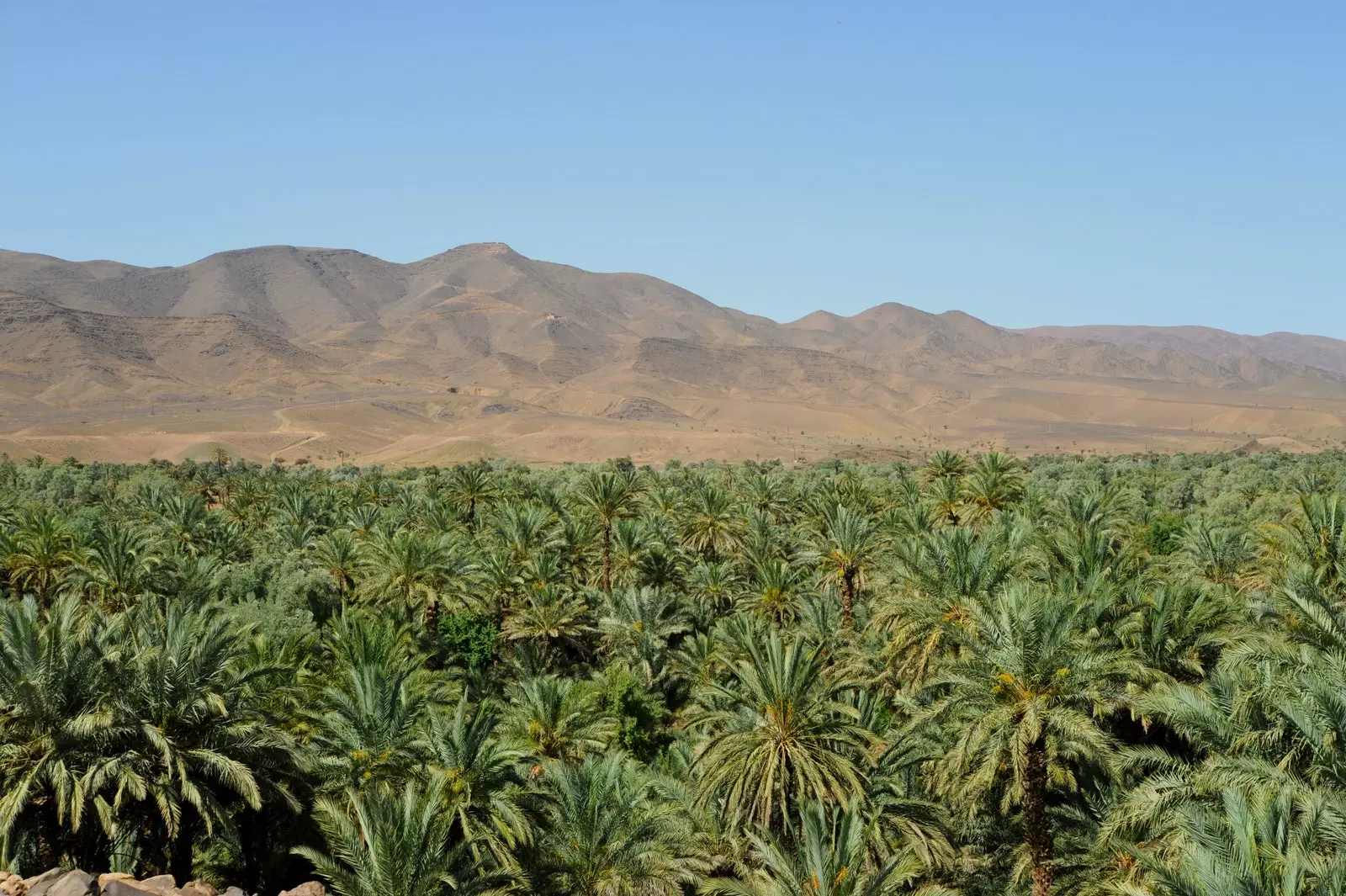
Palm grove of Agdz, in the Draa Valley.
AND FINALLY, THE DESERT!
We move away from the kasbahs to conquer another of the wonders of Morocco: its desert. What better way is there to end this magical journey than by sleeping in a tent under the starry sky ?
The golden dunes of the Moroccan Sahara make up a dreamlike landscape in which, despite touching and even throwing ourselves through it, everything seems unreal. Between that sea of sand, camels take us to the camp blending in with the environment.
We arrive at Caravanserai Luxury Desert Camp, where elegance and comfort welcome us to show us that sleeping in the desert is not at odds with comfort: king-size beds, private bathrooms with hot water and even Wi-Fi connection.
They welcome us with the traditional tea with which we enjoy the most special sunset of the trip. That one of intense oranges that is shading dunes and turning off, little by little, the light of the desert to give way to darkness and silence. After a hearty dinner in the tent-restaurant of the camp, the music of the Berbers next to a bonfire puts the soundtrack to nothing under the most beautiful starry sky.
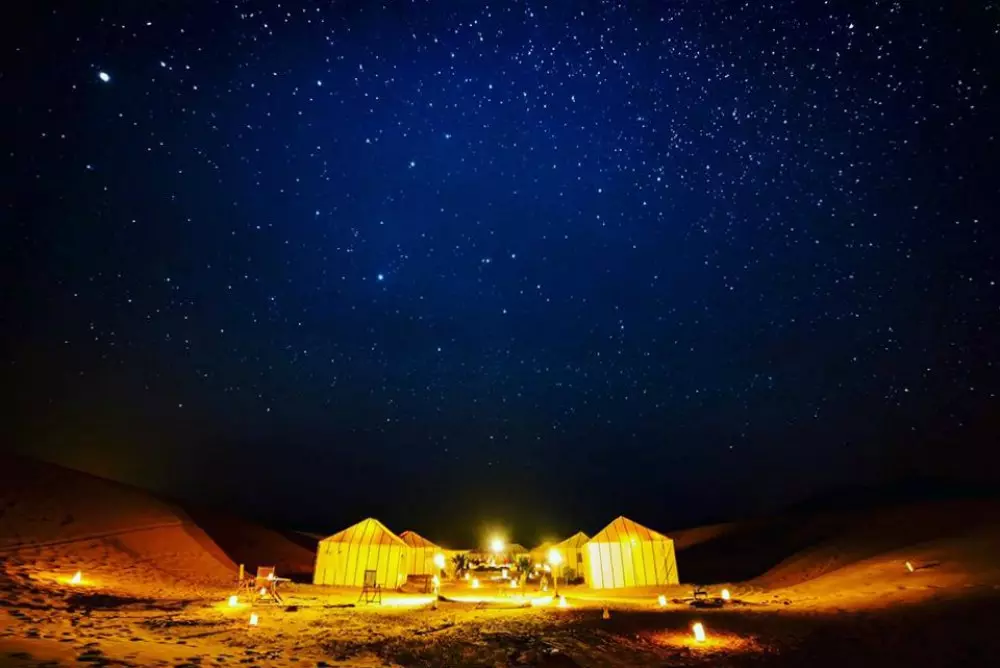
The trip ends sleeping under the desert stars in the Caravanserai Luxury Desert Camp.
